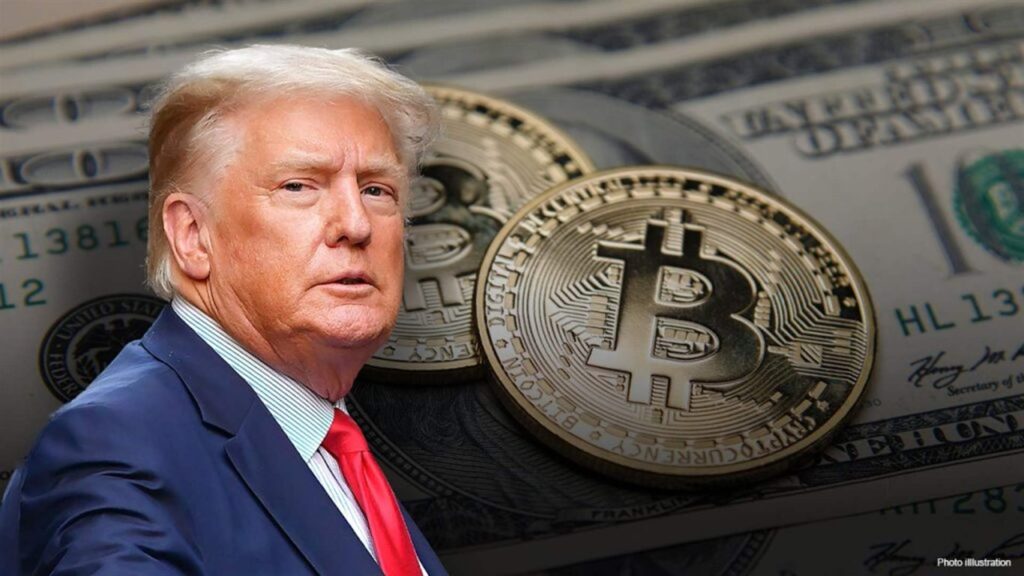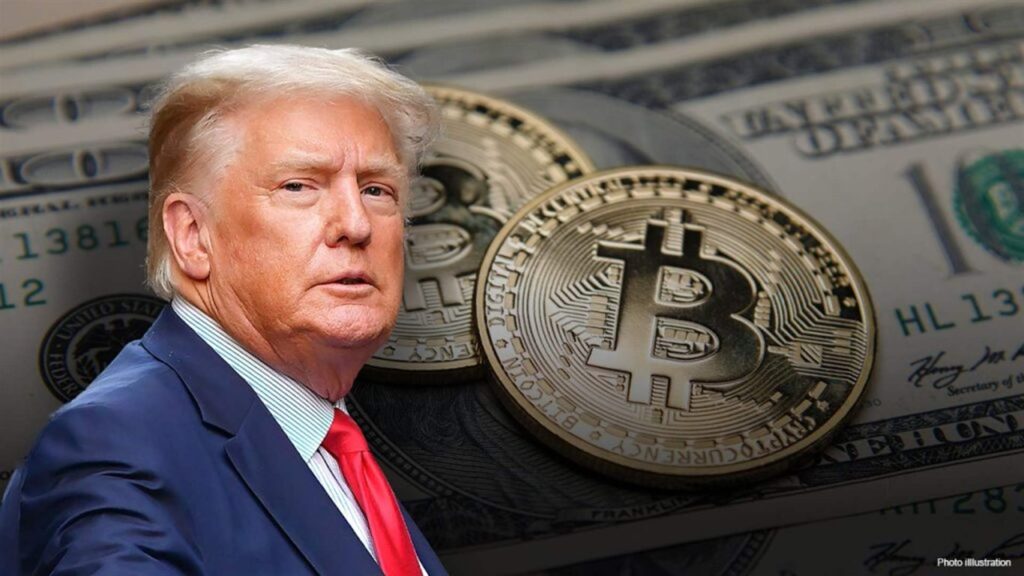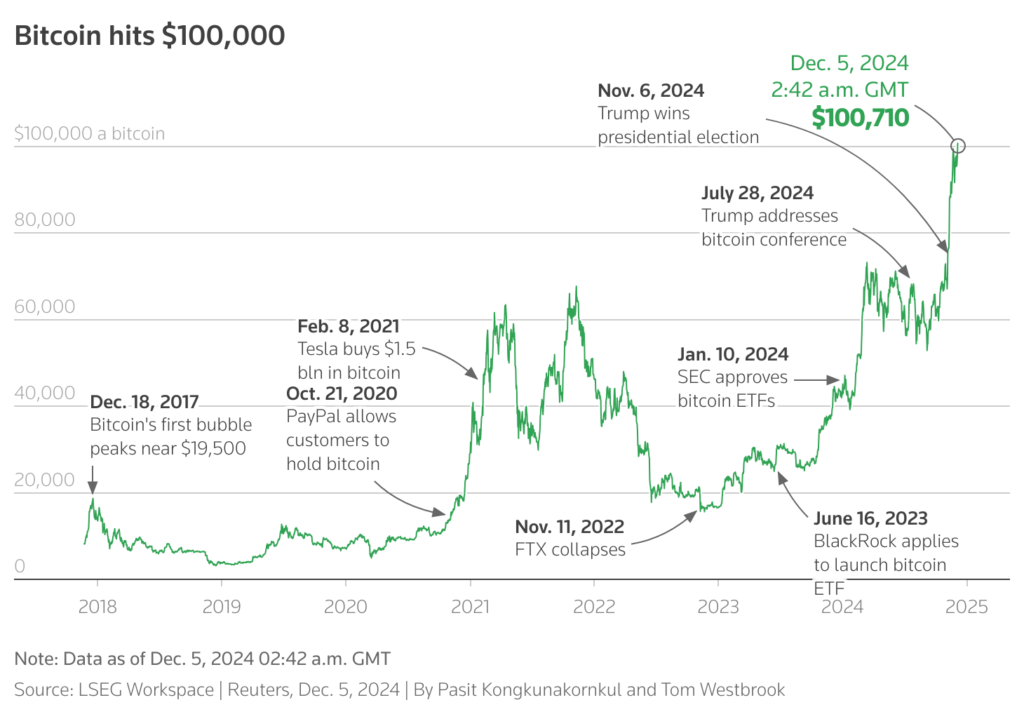
Trump’s Bitcoin and the Volatility in the Altcoin Market
In recent years, the cryptocurrency market has gained immense popularity, not just among tech enthusiasts and financial investors, but also among politicians and public figures. Former U.S. President Donald Trump has had a notable stance on Bitcoin and its implications for the global economy. In this article, we will explore Trump’s views on Bitcoin and how they relate to the volatile nature of altcoins in the broader cryptocurrency market.
Trump’s View on Bitcoin
Donald Trump’s perspective on Bitcoin has often been skeptical and cautious. In various statements and interviews, he has consistently expressed concerns about Bitcoin’s potential as a stable investment. In 2019, Trump took to Twitter to publicly criticize Bitcoin, calling it «not money» and «highly volatile.» He also expressed doubts about its ability to function as a stable store of value or medium of exchange, which are key characteristics of traditional currencies.

While Trump’s criticism primarily focused on Bitcoin, his general wariness toward cryptocurrencies reflected a broader concern regarding the lack of regulation in the market. As a proponent of traditional financial systems, Trump emphasized the importance of maintaining the dollar as the world’s reserve currency. He has stated that Bitcoin, and cryptocurrencies in general, could pose a threat to the dominance of the U.S. dollar, which underpins the global financial system. His concerns also extended to the possibility of cryptocurrencies being used for illicit activities, such as money laundering and terrorism financing, due to their pseudonymous nature.
However, Trump’s views on Bitcoin were not all dismissive. In some instances, he acknowledged the growing popularity of cryptocurrencies and the underlying technology, blockchain. While he did not fully embrace Bitcoin, Trump’s comments indicated that he understood the potential of blockchain as a transformative technology for various industries, including finance, supply chain management, and digital identity verification.
Trump and the Rise of Digital Assets
Although Trump’s views on Bitcoin have remained critical, his presidency indirectly contributed to the rise of digital assets. The increased interest in alternative investments during his tenure, particularly amid the economic uncertainty caused by the COVID-19 pandemic, led many investors to explore cryptocurrencies. Bitcoin, in particular, gained significant traction as a “safe haven” asset during periods of market turmoil, driven by its decentralized nature and limited supply.

Additionally, during Trump’s time in office, the Federal Reserve’s aggressive monetary policy, including record-low interest rates and large-scale stimulus programs, sparked inflation fears. This environment led many investors to view Bitcoin and other cryptocurrencies as a hedge against traditional fiat currencies like the dollar. While Trump’s policies contributed to some of these economic conditions, his criticism of Bitcoin did little to prevent its growing mainstream adoption.
The Volatility of the Altcoin Market
One of the defining characteristics of the cryptocurrency market is its inherent volatility. While Bitcoin remains the largest and most well-known cryptocurrency, altcoins (alternative cryptocurrencies) have become an essential part of the broader ecosystem. However, altcoins are often subject to even more extreme fluctuations in price and market sentiment than Bitcoin, making them an attractive yet risky investment for traders.
Volatility in the altcoin market is driven by several factors, including market speculation, investor sentiment, and the overall regulatory environment. Unlike Bitcoin, which has established itself as a relatively stable asset in comparison, altcoins are often more vulnerable to sudden price swings. These coins often lack the same level of institutional support, liquidity, and widespread adoption, which makes them more susceptible to market manipulation and emotional trading.
Market Speculation and Hype
One of the primary drivers of volatility in the altcoin market is speculation. Many altcoins experience sudden price spikes due to hype and excitement generated by social media influencers, online communities, or announcements of new partnerships and updates. For example, when a popular figure in the cryptocurrency community endorses a particular altcoin, it can cause a surge in demand, pushing prices to unsustainable levels. However, these price movements are often short-lived, and once the hype dies down, altcoins can experience steep corrections, leaving investors with significant losses.
The speculative nature of the altcoin market also makes it prone to “pump and dump” schemes, where groups of traders artificially inflate the price of a coin, only to sell off their holdings once the price peaks. This type of market manipulation contributes to the wild price swings seen in many altcoins, and it can create an environment where investors are often left scrambling to recover their losses.
Regulatory Uncertainty and Its Impact on Volatility
Another key factor contributing to the volatility in the altcoin market is regulatory uncertainty. While Bitcoin has attracted more attention from regulators worldwide, many altcoins still face an unclear regulatory landscape. Some countries have banned cryptocurrencies altogether, while others have introduced stricter regulations to combat illegal activities such as money laundering. The lack of regulatory clarity in many regions creates an environment of uncertainty, which in turn increases the risk for investors.
Regulatory news, such as potential crackdowns or favorable legislation, can have an outsized impact on the prices of altcoins. For instance, when China announced in 2021 that it was intensifying its crackdown on cryptocurrency mining and trading, the prices of many altcoins plummeted in response. Conversely, announcements of positive regulatory developments in countries like El Salvador, which made Bitcoin legal tender, led to price surges in the cryptocurrency market.
Conclusion: Navigating the Risks
As the cryptocurrency market continues to evolve, it is essential for investors to understand the risks associated with altcoins, particularly in the context of Bitcoin’s role in the global financial system. While Bitcoin has gained wider acceptance and recognition as a store of value, altcoins remain highly speculative and volatile, with price swings often driven by hype, speculation, and regulatory changes.
While Trump’s views on Bitcoin and cryptocurrencies reflect a cautionary stance, the broader market has continued to thrive, with Bitcoin and altcoins finding their place in the portfolios of institutional investors and retail traders alike. As the market matures, it is likely that we will see increased regulatory clarity and the development of more stable digital assets. However, for now, the volatility in the altcoin market remains a critical factor for investors to consider before diving into the world of cryptocurrencies.